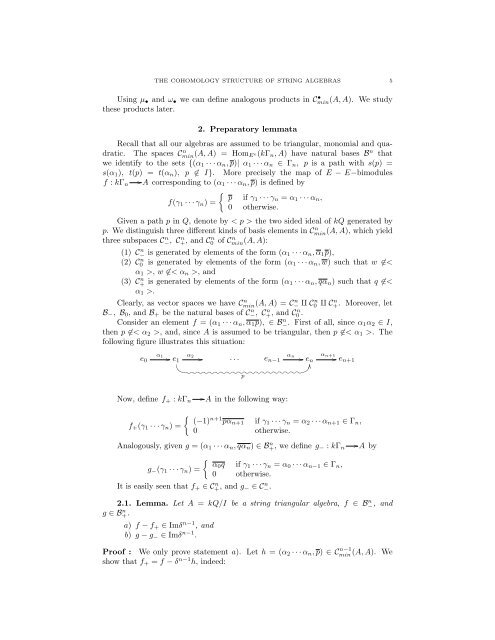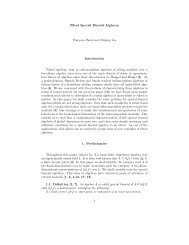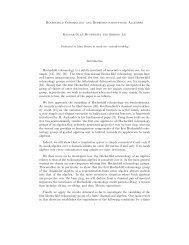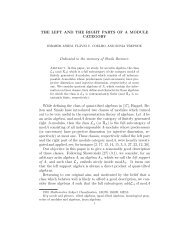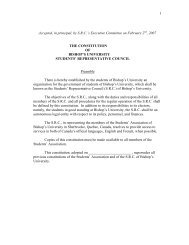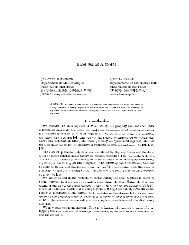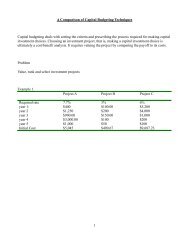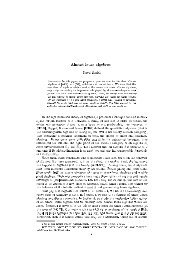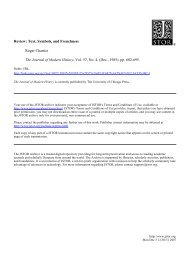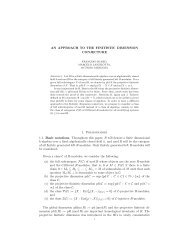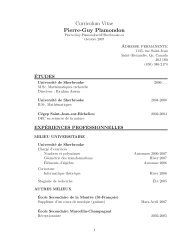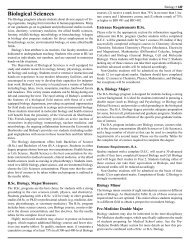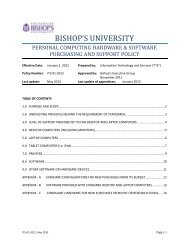The cohomology structure of string algebras
The cohomology structure of string algebras
The cohomology structure of string algebras
You also want an ePaper? Increase the reach of your titles
YUMPU automatically turns print PDFs into web optimized ePapers that Google loves.
THE COHOMOLOGY STRUCTURE OF STRING ALGEBRAS 5<br />
Using µ • and ω • we can define analogous products in C min • (A, A). We study<br />
these products later.<br />
2. Preparatory lemmata<br />
Recall that all our <strong>algebras</strong> are assumed to be triangular, monomial and quadratic.<br />
<strong>The</strong> spaces Cmin n (A, A) = Hom E e(kΓ n, A) have natural bases B n that<br />
we identify to the sets {(α 1 · · · α n , p)| α 1 · · · α n ∈ Γ n , p is a path with s(p) =<br />
s(α 1 ), t(p) = t(α n ), p ∉ I}. More precisely the map <strong>of</strong> E − E−bimodules<br />
f : kΓ n<br />
A corresponding to (α 1 · · · α n , p) is defined by<br />
{ p if γ1 · · · γ<br />
f(γ 1 · · · γ n ) =<br />
n = α 1 · · · α n ,<br />
0 otherwise.<br />
Given a path p in Q, denote by < p > the two sided ideal <strong>of</strong> kQ generated by<br />
p. We distinguish three different kinds <strong>of</strong> basis elements in Cmin n (A, A), which yield<br />
three subspaces C−, n C+, n and C0<br />
n <strong>of</strong> Cmin n (A, A):<br />
(1) C− n is generated by elements <strong>of</strong> the form (α 1 · · · α n , α 1 p),<br />
(2) C0 n is generated by elements <strong>of</strong> the form (α 1 · · · α n , w) such that w ∉<<br />
α 1 >, w ∉< α n >, and<br />
(3) C+ n is generated by elements <strong>of</strong> the form (α 1 · · · α n , qα n ) such that q ∉<<br />
α 1 >.<br />
Clearly, as vector spaces we have C n min (A, A) = Cn − ∐ C n 0 ∐ C n +. Moreover, let<br />
B − , B 0 , and B + be the natural bases <strong>of</strong> C n −, C n +, and C n 0 .<br />
Consider an element f = (α 1 · · · α n , α 1 p), ∈ B n −. First <strong>of</strong> all, since α 1 α 2 ∈ I,<br />
then p ∉< α 2 >, and, since A is assumed to be triangular, then p ∉< α 1 >. <strong>The</strong><br />
following figure illustrates this situation:<br />
α<br />
e<br />
1 α<br />
0<br />
e<br />
2<br />
1<br />
<br />
<br />
α<br />
· · · e n α<br />
n−1 n+1<br />
<br />
e n<br />
e n+1<br />
p<br />
Now, define f + : kΓ n<br />
A in the following way:<br />
{ (−1)<br />
f + (γ 1 · · · γ n ) =<br />
n+1 pα n+1 if γ 1 · · · γ n = α 2 · · · α n+1 ∈ Γ n ,<br />
0 otherwise.<br />
Analogously, given g = (α 1 · · · α n , qα n ) ∈ B n +, we define g − : kΓ n<br />
{<br />
α0 q if γ<br />
g − (γ 1 · · · γ n ) =<br />
1 · · · γ n = α 0 · · · α n−1 ∈ Γ n ,<br />
0 otherwise.<br />
It is easily seen that f + ∈ C n +, and g − ∈ C n −.<br />
A by<br />
2.1. Lemma. Let A = kQ/I be a <strong>string</strong> triangular algebra, f ∈ B n −, and<br />
g ∈ B n +.<br />
a) f − f + ∈ Imδ n−1 , and<br />
b) g − g − ∈ Imδ n−1 .<br />
Pro<strong>of</strong> : We only prove statement a). Let h = (α 2 · · · α n , p) ∈ C n−1<br />
min (A, A). We<br />
show that f + = f − δ n−1 h, indeed:


